
Associate the Erodiums
Make room for the sun for this lovely, lesser-known perennial.
Contents
The Erodiums, commonly known as Stork’s Bill, are small perennials typical of Mediterranean flora. They require dry, well-draining soil, even in winter. This is a prerequisite for their successful growth. To allow them to thrive, ensure they have enough space between your perennials, as they have a root system that struggles with competition. They are hardy down to -15 °C. Once these conditions are met, enjoy their decorative and fragrant foliage and their lovely flowers that are best appreciated up close. Similar to geranium flowers, their flowering is delicate, with fine petals often adorned with intricate details. Little jewels to behold! They are sun-loving plants, best positioned in the south or west, ideally with a mineral mulch which is their best companion.
Typically reaching a height of 15 cm, the Erodium is a small perennial with a very long flowering period: it blooms from April to October. Its lifespan is limited, but it self-seeds readily. Discover how to incorporate Erodium into your garden, closely mimicking its natural montane and dry conditions.
In an alpine rockery
Erodium grows wild around the Mediterranean and more broadly on the limestone mountains of Europe. It can also be found in other warm climate regions around the world. To acclimatise it in the garden, create a rockery on a slope where you can plant small alpine perennials, forming a lovely miniature display of plants to admire. Add minerals in the form of stones or gravel.
Plant low-growing species of Erodium that do not exceed 15 cm in height when in flower: Erodium chrysanthum, Erodium variabile ‘Bishop’s Form’, or Erodium ‘Stephanie’ with its delicate light green foliage and charming purple flowers.
Add small specimens typical of mountainous regions, such as the famous Edelweiss, here Leontopodium alpinum ‘Blossom of Snow’. You might also plant, for example, Azorella trifurcata ‘Nana’, a creeping perennial that forms a carpet, Androsace sempervivoides, with pink-mauve flowers, Alyssum montanum ‘Berggold’, with golden-yellow flowers and a honey scent, as well as Houseleek, Sempervivum arachnoideum.

Leontopodium alpinum ‘Blossom of Snow’, Erodium ‘Stephanie’, Azorella trifurcata ‘Nana’, Androsace sempervivoides, Alyssum montanum ‘Berggold’, Sempervivum arachnoideum
In a Mediterranean dry garden
Erodium manescavii is a taller species of Erodium, reaching 40 cm in height at ripeness. In dry, well-draining soil, it harmonises beautifully with medium-sized Mediterranean perennials. Pair it with Cistus, Rosemary, Lantana, and Lavenders.
Here, it is planted with a relative of the Cistus: Halimium commutatum with its bright yellow flowers, and a Spurge, Euphorbia cyparissias ‘Fens Ruby’. A blue-hued grass, Helictotrichon sempervirens, and a very light Gaura lindheimeri White complete the scene.
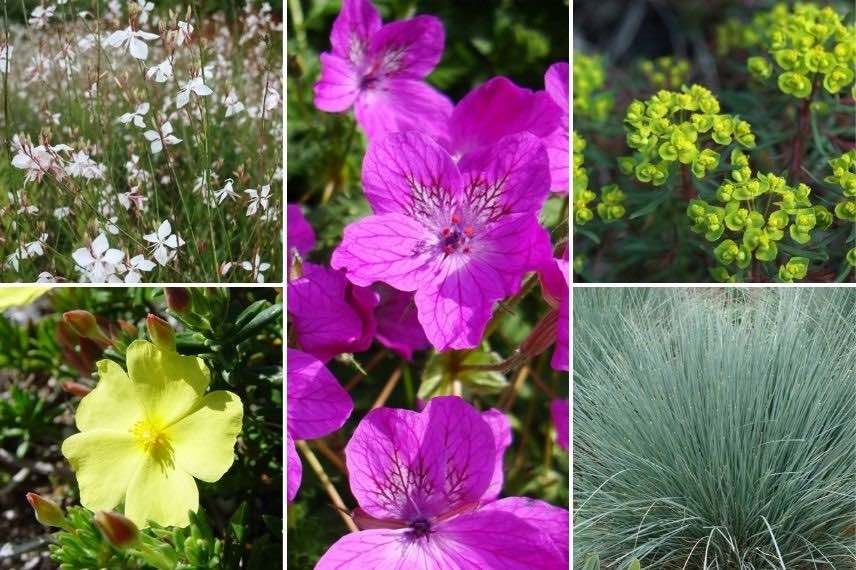
Gaura lindheimeri White, Erodium manescavii, Euphorbia cyparissias ‘Fens Ruby’, Helictotrichon sempervirens, Halimium commutatum
Discover other Erodium - Stork's-Bills
View all →Available in 0 sizes
Available in 2 sizes
Available in 1 sizes
Available in 2 sizes
Available in 1 sizes
Available in 2 sizes
Available in 1 sizes
Available in 1 sizes
In the border of a flowerbed
In well-drained soil and sunny exposure, also plant Erodium at the edge of borders. Alongside drought-tolerant plants, provided you give it space to grow without too much competition, you can enjoy its lovely foliage and delicate flowers.
White and blue harmony: pair Erodium chrysanthum with the carpet Moss Phlox ‘White Delight’ and the Carnation Dianthus arenarius. In the background, Eryngium alpinum ‘Blue Star’, Lavandula angustifolia ‘Hidcote’ and Ballota pseudodictamnus.

Moss Phlox ‘White Delight’, Erodium chrysanthum, Dianthus arenarius, Eryngium alpinum ‘Blue Star’, Lavandula angustifolia ‘Hidcote’, Ballota pseudodictamnus
Read also
How to create a gravel garden?In a pot
The pedigree of Erodium gives it every opportunity to thrive in a pot. Erodium variabile ‘Bishop’s Form’ has lovely rounded, dentate foliage that is slightly undulate. It is abundantly adorned with pink flowers veined with purple.
Here, we focus on Sedums or Stonecrops and Sempervivums or Houseleeks. These succulent plants are easy to grow in pots where they almost self-manage and thrive quietly. A combination of Sedum lydium ‘Glaucum’, Sedum cauticola‘Lidakense’ with the pink Erodium. The houseleeks Sempervivum‘Chick Charms’ ® ‘Chocolate Kiss’, Sempervivum‘Chick Charms’ ® ‘Cotton Candy’, bring their rounded shape.
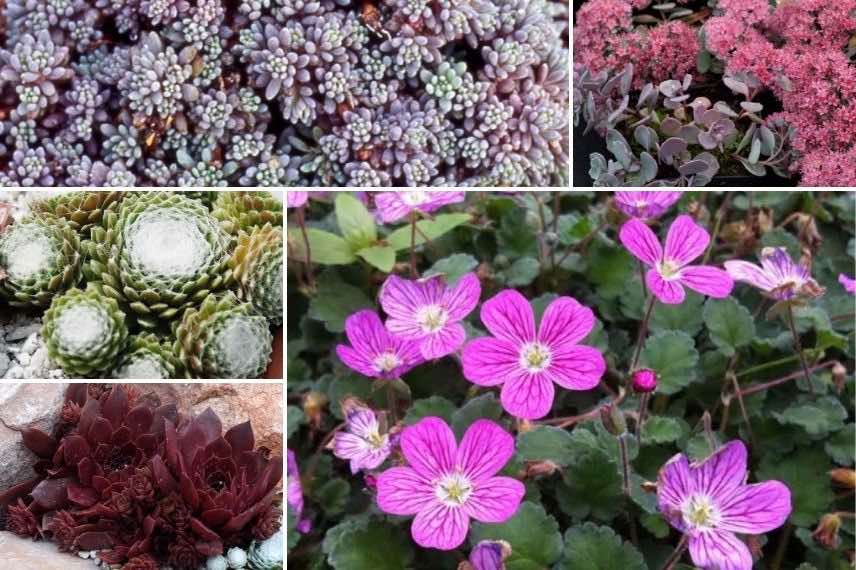
Sedum lydium ‘Glaucum’, Sedum cauticola ‘Lidakense’, Erodium variabile ‘Bishop’s Form’, Sempervivum ‘Chick Charms’ ® ‘Chocolate Kiss’, Sempervivum ‘Chick Charms’ ® ‘Cotton Candy’
In the gaps
Erodium cicutarium and Erodium moschatum, annuals and biennials, grow naturally in cracks of soil and stones, in sandy soils. All Erodiums thrive in these conditions of poor soil, with little earth, and very dry. You can plant them between slabs, on walls, in crevices, where a small pocket of soil welcomes them without concern. Thus, even if your land is not suitable for growing Erodium, you may still be able to cultivate it on a wall or sunny terrace. Feel free to plant it alongside Saxifrages and Armeria, for example.
You may notice in the photo below that the Erodium has a curious fruiting structure, with long beaks measuring 2 to 3 cm, which then curl, hence its vernacular name, Crane’s Bill. This makes it a botanical curiosity to have at home to observe its various transitions.

Erodium cicutarium and its fruits, achenes, measuring 2 to 3 cm
In the company of bulbs
Of low height, Erodium blends gracefully with small spring bulbs.
Here, the flowerings follow one another from March to May with the botanical tulip turkestanica, the botanical tulip clusiana ‘Cynthia’, and the Ornithogalum nutans. Enjoy their elegant and refined flowerings, which are very bright. The Erodium chrysanthum and its bright flower in the sun take over from June to September.
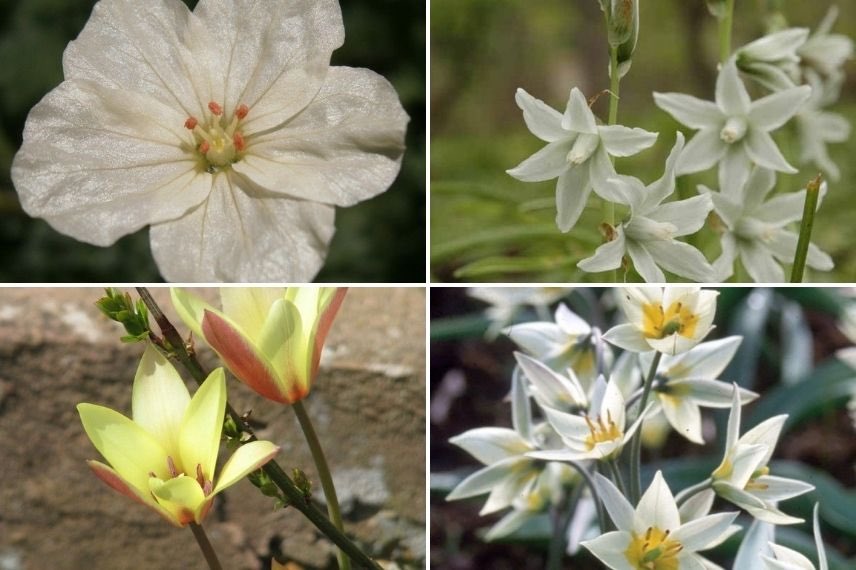
Erodium chrysanthum, Ornithogalum nutans, botanical tulip turkestanica, botanical tulip clusiana Cynthia
Pairing aromatic foliage
Erodium has attractive foliage, varying by species, and is also aromatic. Aromatic and edible. Without delving into this latter aspect, why not pair it with other aromatic perennials typical of Mediterranean climates, accustomed to growing in dry, well-drained soil in full sun? Thus, aromatic perennials such as Thymes, Rosmaries, Lavenders, Oreganos, Sages, Everlastings, and Santolines all share the same growing conditions and create beautiful fragrant displays. Their flowering is subtle, and their foliage, when crushed, evokes the warm scents of the garrigue.
Let’s highlight a few plants here, such as Greek mountain tea or Cretan tea: Sideritis syriaca, which is very interesting to drink. The beautiful Origanum rotundifolium ‘Kent Beauty’ accompanies Erodium manescavii with Thymus capitatus and Santolina chamaecyparissus.
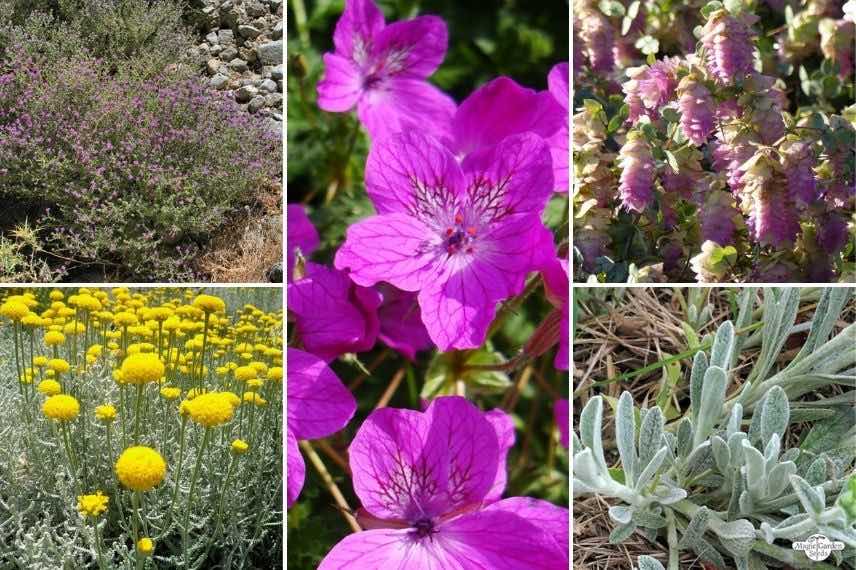
Thymus capitatus, Erodium manescavii, Origanum rotundifolium ‘Kent Beauty’, Sideritis syriaca, Santolina chamaecyparissus
- Subscribe!
- Contents
































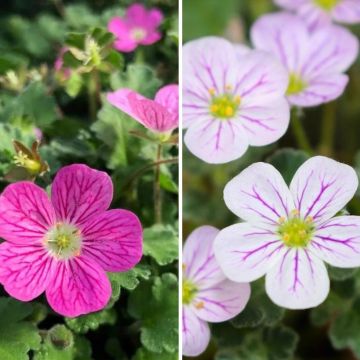
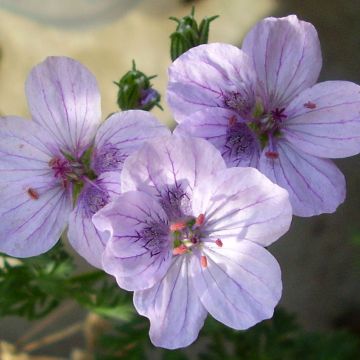

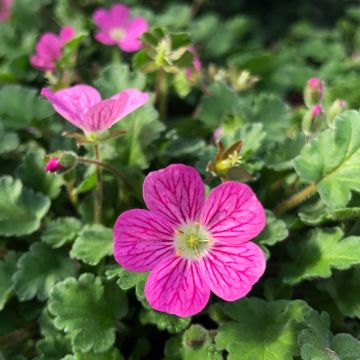
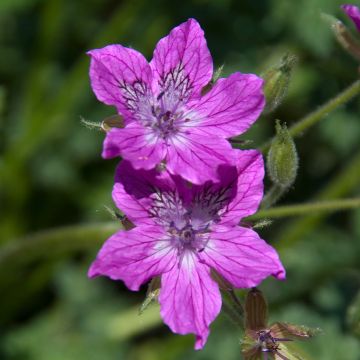
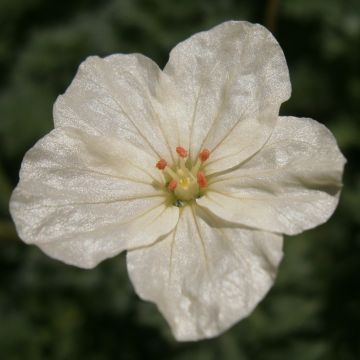

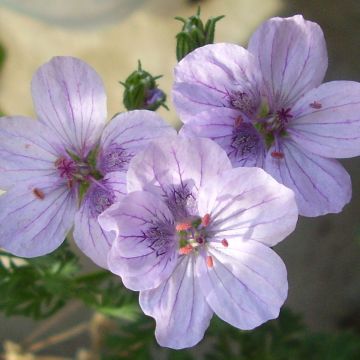
Comments